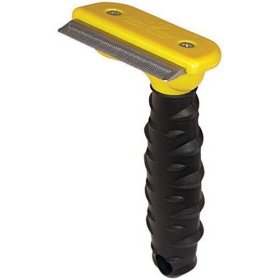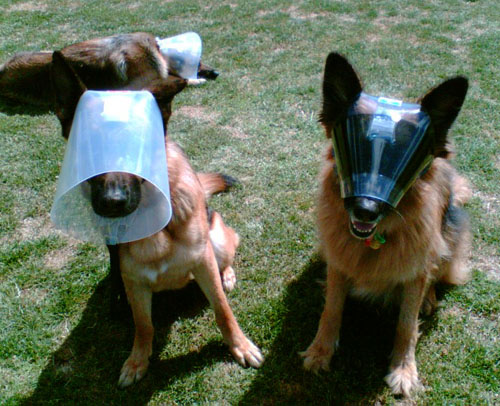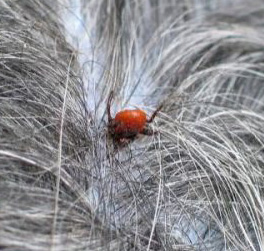
It’s that time of year again when we seem to have more fur coming off our pets than staying on them, so I thought I’d run this post again on one of our absolute favorite grooming tools.
The Furminator is great! (Though the name is kind of goofy.) I used to use a shedding rake, but the Furminator gets out so much more fur, it’s amazing. This video gives you an idea of how well it works.
It doesn’t cut hair or damage the top coat in any way. It just really gets the shedding undercoat and hairs. You can see in this slow-motion video that it isn’t cutting the coat.
The “comb” is made of closely spaced, pointed teeth and because they are so closely spaced they don’t hurt the animal’s skin, but are able to get deep into the coat. It’s the v’s formed by the teeth that catch the loose fur. You can see them by clicking on the thumbnail.
Saffron loves it. I don’t use it on her undercarriage where there is much less fur and her skin is visible. And I hold her skin taut where it’s looser, like around her neck. As with any grooming tool, I’m careful around her hips and spine. Sage loves the Furminator too, which means fewer hairballs. It’s hard to believe how much fur it gets out of their coats, which means a lot less fur around the house and filling up vacuum cleaner bags. Raven’s coat lays very close to her skin and she doesn’t like to be groomed with anything. According to The Furminator FAQ, there are some breeds of dogs they don’t recommend using it on:
American Water Spaniel
Bedlington Terrier
Bichon Frise
Chinese Crested
English Setter–depends on the coat
Flat-Coated Retriever
Glen of Imaal Terrier
Havanese
Irish Water Spaniel
Japanese Chin
Komondor
Lhasa Apso–depends on coat
Lowchen
Maltese
Pekingese–depends on coat
Poodle
Portuguese Water Dog
Puli
Saluki
Shih Tzu–depends on coat
Silky Terrier
Soft Coated Wheaten Terrier
Tibetan Spaniel–depends on coat
The Furminator comes in different sizes—I got the Medium. Starting with the Medium and on up, you can get replacement combs—screws hold them in place. It’s hard to imagine needing one though. They come with a guard to protect the comb when not in use. Ours came with samples of Furminator shampoos and conditioners. They didn’t seem remarkably different from other good shampoos and conditioners (Note: I am not connected to the Furminator company.)








